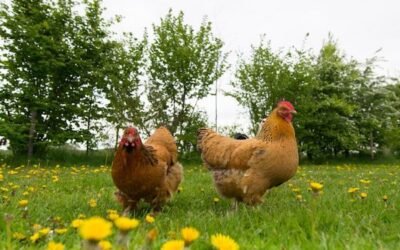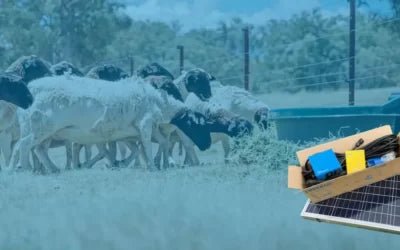Hobby farming in Australia is a growing trend, with more individuals and families embracing the joys of connecting with the land, growing their own food, and enjoying a simpler, more self-sufficient lifestyle.
What Is a Hobby Farm?
In Australia, a hobby farm is a piece of land or property where agricultural or farming activities are primarily pursued for personal enjoyment, recreation, and self-sufficiency rather than as a primary source of income. Hobby farming is distinct from commercial agriculture, with a focus on non-commercial and diverse agricultural activities.
Hobby farms are as varied as the people who tend to them. They can encompass a range of activities, including:
-
Gardening,
-
Animal husbandry
-
Orchard cultivation
-
Production of homemade goods like honey, jams, and cheese.
The emphasis is on connecting with nature, sustainability, and a desire for a more hands-on and fulfilling lifestyle.
How Large is a Hobby Farm?
The size of hobby farms can range from a few acres (1-2 hectares) to larger properties of 10 acres (4 hectares) or more. The specific size of a hobby farm can depend on various factors, including the owner’s goals, available land, and the type of activities they wish to pursue, such as gardening, keeping livestock, or other rural hobbies.
Water Management and Hobby Farming
The success of a hobby farm is closely tied to one critical element: water management. In this comprehensive guide, we explore the key aspects of water management for hobby farmers, emphasising the importance of sustainability and efficient resource utilisation.
Water Sources and Collection
Understanding your water sources and collection methods is the first step in effective water management. Here are three sources of water below:
Deepwater Sources
Hobby farmers often have several options for water sources. These may include bores, ponds dams or lakes. Each source has its own benefits and considerations. Bores usually provide a dependable year-round supply, while ponds can be a cost-effective solution.
Rainwater Harvesting
For many hobby farmers, rainwater harvesting is an eco-friendly approach. Collecting rainwater through gutters and downspouts can provide a free and sustainable source of water for gardens and livestock. Regular maintenance of the rainwater collection system is essential to ensure its efficiency.
Irrigation Techniques
Efficient irrigation is vital for maintaining the health and productivity of crops. Hobby farmers have several irrigation techniques to choose from, depending on the size of their garden and their specific needs.
Drip Irrigation
Drip irrigation systems deliver water directly to the base of plants through a network of hoses, pipes, and emitters. This method is highly efficient, conserves water, and minimises weed growth.
Soaker Hoses
Soaker hoses are porous hoses that release water along their entire length. They are easy to install and provide consistent, slow watering directly to the soil. These are excellent for garden beds.
Sprinklers
Low volume Sprinklers are suitable for larger areas and are often used for lawns or large garden plots. They provide even coverage but can be less water-efficient than drip or soaker hose systems.
Livestock Watering and Management
Hobby farms often include livestock like cows, horses, chickens, goats, and other animals. Ensuring clean and accessible water for these animals is a priority.Small farms are often situated in rural areas without access to municipal water supplies, so your primary sources of water typically come from water tanks or a borehole. Initially, those water tanks might appear quite substantial, but you’ll soon realise how swiftly that water can be depleted, especially when you’re sharing it with your gardens and livestock.
To put it in perspective, adult cattle consume 80 litres of water per day per head, and if the weather has been dry, the vegetable garden can easily match that water consumption.
Whatever your water source, it is a good idea to test the water before livestock consumption. This includes:
-
pH levels – should be in the range of 6.5 to 8.5
-
Salinity – should include key minerals like calcium, magnesium, sodium, sulfate and carbonate.
-
Chloride levels – should not be high as this can result in salt toxicity
Once tested, work out the best way to get water from your water source, to water troughs, assuming that’s what your animals are drinking from. Also consider storing water in water tanks as you don’t want to be in a situation where you don’t have enough water.
For hobby farms, the best solution for distributing water from your water source to your water tank or troughs are the LORENTZ “S” Self-install solar water pumps. There are many ways hobby farmers can benefit from solar pumps, the main reasons are increased profitability over a longer period of time and reduced time spent on maintenance. Especially with the benefits of remote management and monitoring.
Water Quality and Treatment
Water quality is paramount for the health and well-being of both crops and animals on your hobby farm. Ensure that the water you use is safe and free from contaminants.
Water Testing
Regularly test your water for quality. This includes assessing pH levels, mineral content, and potential contaminants. Local agricultural extension offices can often provide water testing services.
Treatment
Water treatment may be necessary to remove waterborne diseases or contaminants. UV filters, chlorination, or other treatment methods can be employed to ensure water safety.
Sustainable Water Practices
Sustainable water management is not only about conservation but also about minimising the environmental impact of water use on your hobby farm.
Water Conservation
Implement water-efficient irrigation systems like drip irrigation or soaker hoses to reduce water wastage. Rainwater harvesting and water recycling are also sustainable practices.
Renewable Energy
Consider the use of renewable energy sources such as solar, to power essential water systems. Solar energy reduces your reliance on grid electricity and decreases your carbon footprint.
Seasonal Water Management
Hobby farmers must adapt to seasonal variations in water requirements and availability. Dry periods such as El Nino, wet seasons, and extreme weather events all necessitate careful water management.
Drought Management
Adopting the right technologies in preparation for drought conditions can be critical. Efficient water use and drought-resistant crop varieties are also essential.
Excess Water Management
In contrast, wet seasons may require strategies for managing excess water, such as proper drainage systems and raised garden beds to prevent waterlogging.
Emergency Preparedness
Hobby farmers should have contingency plans in place for water supply disruptions and other emergencies.
Emergency Water Storage
Store enough water to sustain your farm during water supply interruptions. This can include large tanks or barrels.
Alternative Water Sources
Identify alternative water sources, such as neighboring farms or community water resources, in case of emergencies.
Infrastructure Maintenance
Regularly maintain and inspect your water infrastructure, including wells, pumps, and pipes, to ensure their reliability.
Conclusion
Effective water management is the cornerstone of a thriving hobby
farm. By understanding your water sources, implementing efficient irrigation techniques, and emphasising sustainable practices, you can ensure the health of your crops and animals while reducing your environmental impact. Hobby farming offers a unique opportunity to connect with the land, grow your own food, and live a more sustainable and self-sufficient lifestyle. Water management is the key to unlocking the full potential of your hobby farm and ensuring its long-term success.






